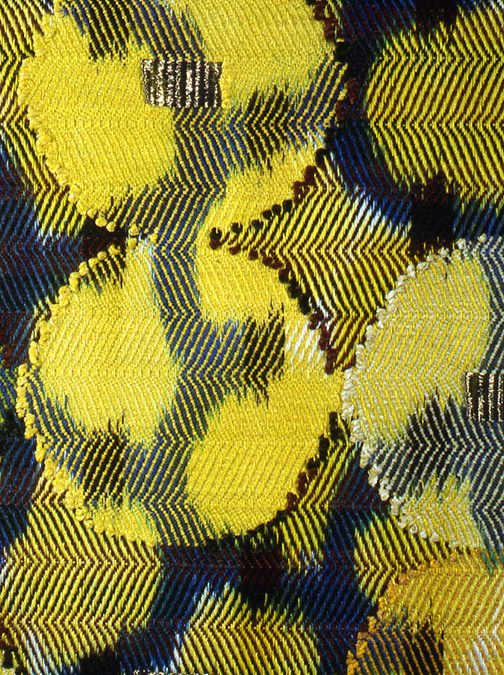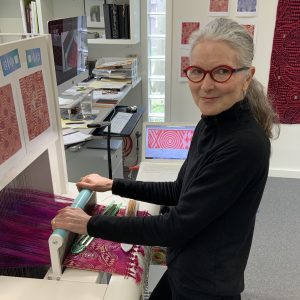 NAME: Janice Lessman-Moss
NAME: Janice Lessman-Moss
BACKSTORY: Janice is best known to me through her jacquard work on the TC-1 which I first saw in the US around 2010, I think. Her level of complex layering, even on a shaft loom, really blew my mind, and still does. I loved how I could stand in front of one of her pieces and study it for a long time without ever quite feeling I had uncovered everything in it. It reminded me a little of some of Diane Sheehan’s work that I had seen in Washington DC a few years previously, not as in ‘reminding me’ of Diane’s work but more as sharing a similar feeling. It was interesting to read that Diane had been an influence in Janice’s weaving life. Janice is Professor of Textile Art at Kent State University and unsurprisingly has shown her work throughout the United States and internationally in solo and group exhibitions, being recognized with numerous Individual Artist Fellowships from the Ohio Arts Council,as well as an Arts Midwest/National Endowment for the Arts Fellowship in Crafts, the Governor’s Award for the Arts in Ohio in 2016, the Cleveland Arts Prize Lifetime Achievement Award in 2019, and the United States Artists Fellowship also in 2019. We all start somewhere and here is Janice’s fascinating path into weaving…
HOW I GOT INTO WEAVING
It has been quite a while since I made my first weaving, but my initial attraction to the medium still holds true today. I respond to the process because of the way it integrates surface and form; the way it physically engages the body in the focused construction of a linear plane; and because of the metaphors inherent to the making and outcome.
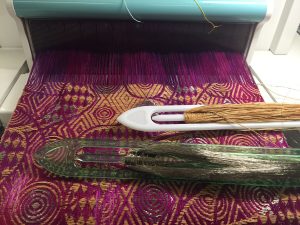
The year was 1977 and newly married, I moved with my husband to Philadelphia to study at Tyler School of Art. Out of curiosity, I enrolled in a course listed as Textiles, or Weaving….or something like that?….. and that experience changed my life! What impressed me the most at the time was seeing an exhibition in the school’s gallery, curated by professor Adela Akers, of a range of work, the likes of which I had never seen before. Small pieces by Dominic DiMare and Lewis Knauss were particularly impactful. Their work exhibited a sensitivity for material while the repetitive processes of wrapping and weaving were so poetic. I was profoundly inspired. I went on to the University of Michigan to continue my studies with Sherri Smith and upon receiving my MFA, I was offered a position to teach weaving at Kent State University. My knowledge of weaving was somewhat rudimentary at that point, so what a gift it was to be able to immerse myself in study and explorations of numerous textile techniques in my role of professor. Through the university, I organized lectures, workshops and coordinated exhibitions that brought visiting artists to campus. I continued to learn about the field and working with the unique processes of weaving from Sandra Brownlee, Diane Sheehan, Ewa Latkowska-Zychska and Bhakti Ziek, to name a few.
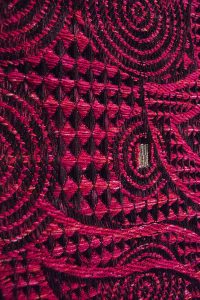
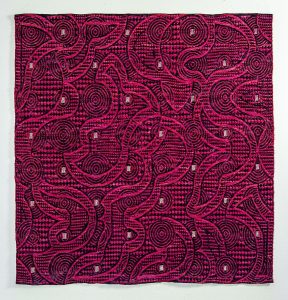
Weaving is the ultimate connector – physically and poetically. A range of linear materials can be embedded during construction along the length of the warp, to create variations in texture, drape, and to enhance meaning. The introduction of thick wefts also reinforces the physicality of the field – the weavings’ objectness/thingness – that I find so appealing. Once color becomes a part of the equation, options expand exponentially. The optical blending that occurs when the warp and weft are united enriches the palette, and provides a quality of transparency, even a sense of mystery. Changing colors in the weft, using discontinuous or supplementary insertions, painting the threads or using ikat and/or shifting ikat provide yet more ways to orchestrate patterns in the composition.
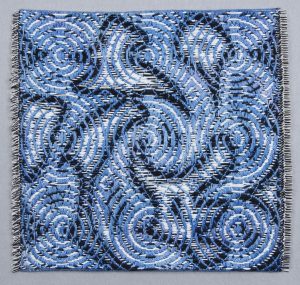
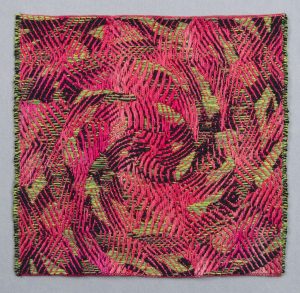
Almost as soon as I started working with the matrix of the grid on the loom, I was compelled to consider ways to break the rigidity of that structure. I like the challenge of creating something unexpected, complex or more organic within the horizontal and vertical axes. I have used various materials to create a knotted pile, weft insertions, as well as painted warp, and discontinuous weft to introduce curvilinear, lyrical movements derived from the circle. The dynamic contrasts are appealing to me and the symbolic associations create a fertile platform for content.
What an opportunity for further elaboration on my design ideas, when we purchased our first TC1 loom at Kent State in 2001. Although I had been working with computer dobby looms for some time, the single thread control loom provides a whole new sense of freedom and flexibility. Systematic planning and mathematical precision, so foundational to my work are complemented by a quality of serendipity as compositions evolve in the virtual world of the computer. Patterning, layering and collaging easily achieved through the generative capabilities of the tool, create possibilities for establishing visual connections among a range of motifs of different shapes, scales, clarity, etc.
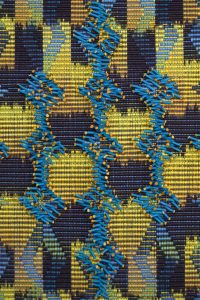
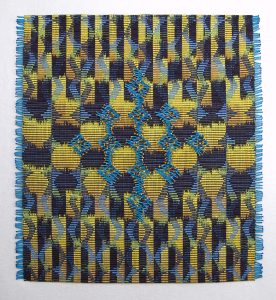
I move through the world on foot whenever possible and am very interested in the connection of the activities of weaving and walking. Both advance at a slow methodical pace. While walking, I am doing the moving……in weaving it is the landscape of the weaving itself that advances beneath my hands in a slow unfolding of details. Time and space are captured in the creation of the woven composition.
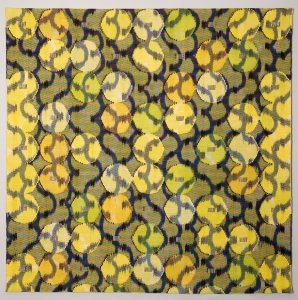
The architecture of digital design and weaving appeal to my sense of order and touch, and continues to satisfy my artistic interests. I am dedicated to my practice and sharing my experiences with my students. With a beautiful, well equipped studio in my house, I make sure I spend time every day doing something that moves me forward in my work.
Janice’s website is www.janicelessman-moss.com
LIST OF WEAVINGS:
From top: #483C, Part of the Dancing with the Distance series that I am working on now on my small TC2 loom; Pink: #476 Hot Night, and detail ©3/19, 59×57”, silk, linen, metal wire, digital jacquard, hand woven TC2, resist dyed warp; #456A (blue) & #456H, Summer Air II, ©2016, 11×12” each, silk, linen, paper core, digital jacquard, hand woven TC2 loom, painted warp; #409, With the Morning Comes the Sun V, ©10/11, 18.5×17, silk, linen, nylon, painted, ikat, painted warp (compu dobby ARM loom); and bottom #258, Better Off Believin’, ©7/99, 71×71″, linen, cotton, wire, ikat, painted warp (compu dobby Macomber loom) Featured image #258 detail, Better Off Believin’
NEXT TIME: Alice Schlein

